Leveraging epigenomes and three-dimensional genome organization for interpreting regulatory variation
- PMID: 37428809
- PMCID: PMC10358954
- DOI: 10.1371/journal.pcbi.1011286
Leveraging epigenomes and three-dimensional genome organization for interpreting regulatory variation
Abstract
Understanding the impact of regulatory variants on complex phenotypes is a significant challenge because the genes and pathways that are targeted by such variants and the cell type context in which regulatory variants operate are typically unknown. Cell-type-specific long-range regulatory interactions that occur between a distal regulatory sequence and a gene offer a powerful framework for examining the impact of regulatory variants on complex phenotypes. However, high-resolution maps of such long-range interactions are available only for a handful of cell types. Furthermore, identifying specific gene subnetworks or pathways that are targeted by a set of variants is a significant challenge. We have developed L-HiC-Reg, a Random Forests regression method to predict high-resolution contact counts in new cell types, and a network-based framework to identify candidate cell-type-specific gene networks targeted by a set of variants from a genome-wide association study (GWAS). We applied our approach to predict interactions in 55 Roadmap Epigenomics Mapping Consortium cell types, which we used to interpret regulatory single nucleotide polymorphisms (SNPs) in the NHGRI-EBI GWAS catalogue. Using our approach, we performed an in-depth characterization of fifteen different phenotypes including schizophrenia, coronary artery disease (CAD) and Crohn's disease. We found differentially wired subnetworks consisting of known as well as novel gene targets of regulatory SNPs. Taken together, our compendium of interactions and the associated network-based analysis pipeline leverages long-range regulatory interactions to examine the context-specific impact of regulatory variation in complex phenotypes.
Copyright: © 2023 Baur et al. This is an open access article distributed under the terms of the Creative Commons Attribution License, which permits unrestricted use, distribution, and reproduction in any medium, provided the original author and source are credited.
Conflict of interest statement
The authors have declared that no competing interests exist.
Figures
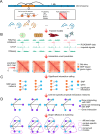
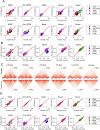
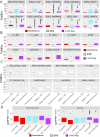
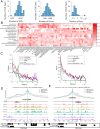

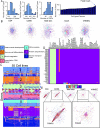
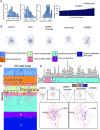
Similar articles
-
cepip: context-dependent epigenomic weighting for prioritization of regulatory variants and disease-associated genes.Genome Biol. 2017 Mar 16;18(1):52. doi: 10.1186/s13059-017-1177-3. Genome Biol. 2017. PMID: 28302177 Free PMC article.
-
Identification of susceptibility modules for coronary artery disease using a genome wide integrated network analysis.Gene. 2013 Dec 1;531(2):347-54. doi: 10.1016/j.gene.2013.08.059. Epub 2013 Aug 29. Gene. 2013. PMID: 23994195
-
A comprehensive integrated post-GWAS analysis of Type 1 diabetes reveals enhancer-based immune dysregulation.PLoS One. 2021 Sep 16;16(9):e0257265. doi: 10.1371/journal.pone.0257265. eCollection 2021. PLoS One. 2021. PMID: 34529725 Free PMC article.
-
Interpreting non-coding disease-associated human variants using single-cell epigenomics.Nat Rev Genet. 2023 Aug;24(8):516-534. doi: 10.1038/s41576-023-00598-6. Epub 2023 May 9. Nat Rev Genet. 2023. PMID: 37161089 Free PMC article. Review.
-
Parsing the Functional Impact of Noncoding Genetic Variants in the Brain Epigenome.Biol Psychiatry. 2021 Jan 1;89(1):65-75. doi: 10.1016/j.biopsych.2020.06.033. Epub 2020 Oct 3. Biol Psychiatry. 2021. PMID: 33131715 Free PMC article. Review.
Cited by
-
Machine and Deep Learning Methods for Predicting 3D Genome Organization.Methods Mol Biol. 2025;2856:357-400. doi: 10.1007/978-1-0716-4136-1_22. Methods Mol Biol. 2025. PMID: 39283464 Review.
-
Machine and deep learning methods for predicting 3D genome organization.ArXiv [Preprint]. 2024 Mar 4:arXiv:2403.03231v1. ArXiv. 2024. Update in: Methods Mol Biol. 2025;2856:357-400. doi: 10.1007/978-1-0716-4136-1_22. PMID: 38495565 Free PMC article. Updated. Preprint.
References
Publication types
MeSH terms
Grants and funding
LinkOut - more resources
Full Text Sources
Miscellaneous

